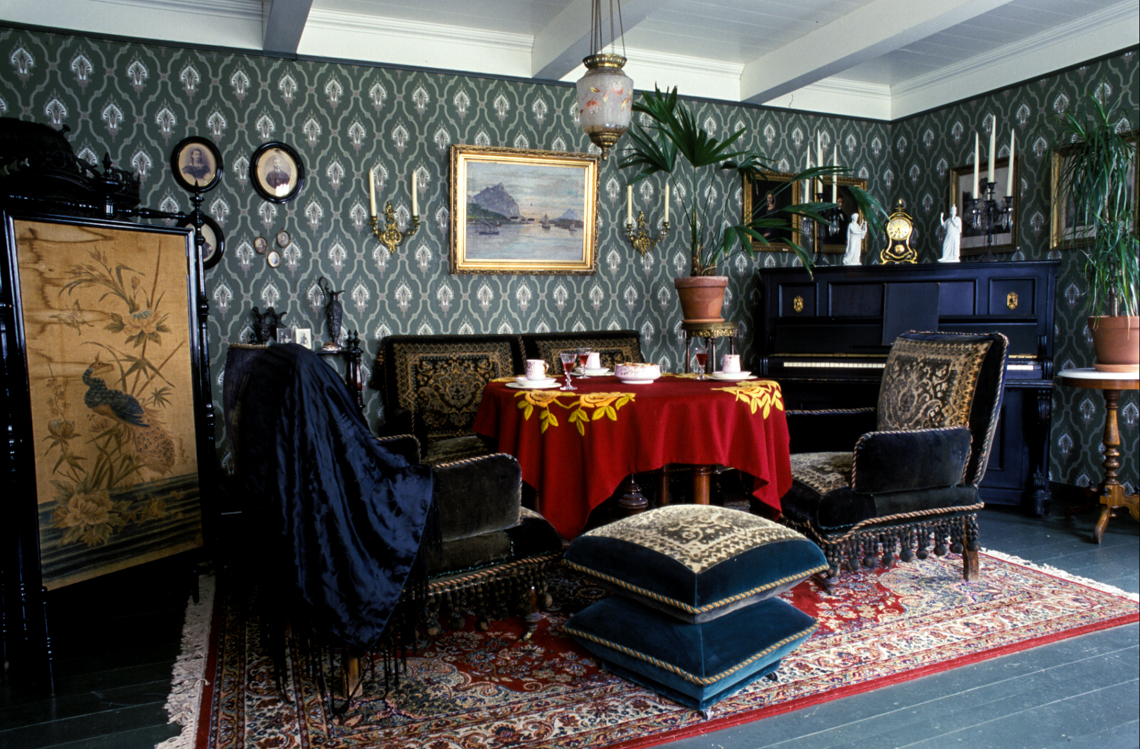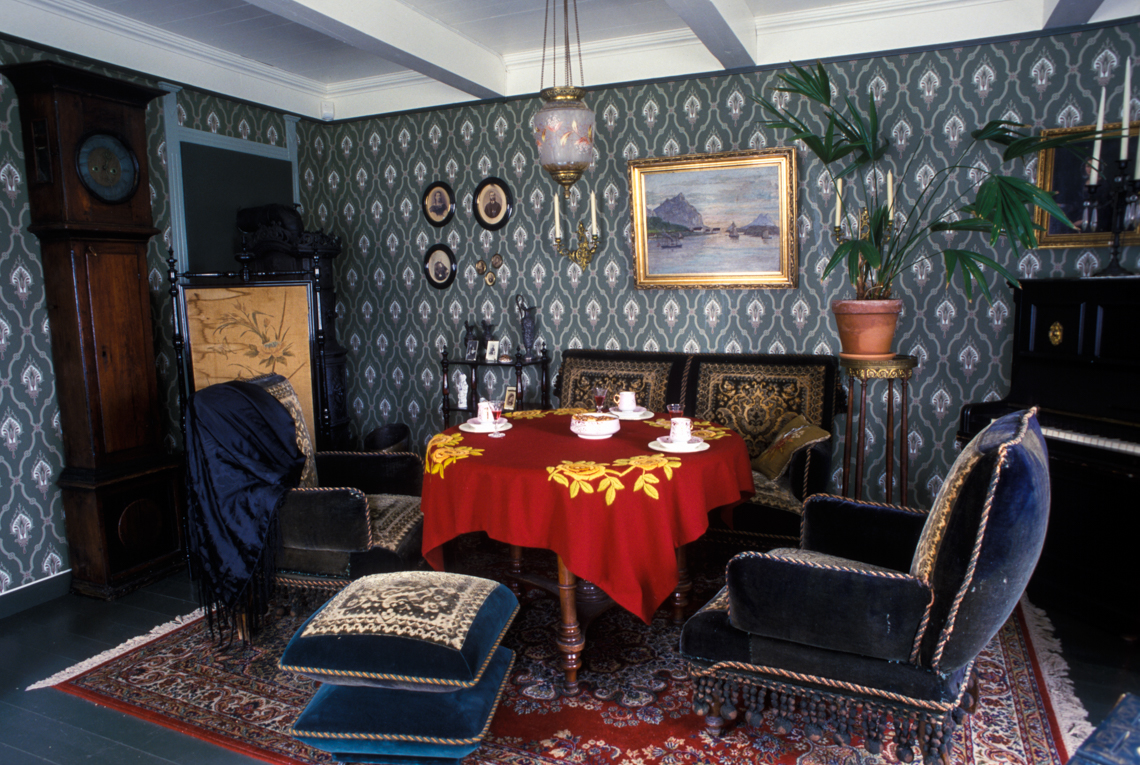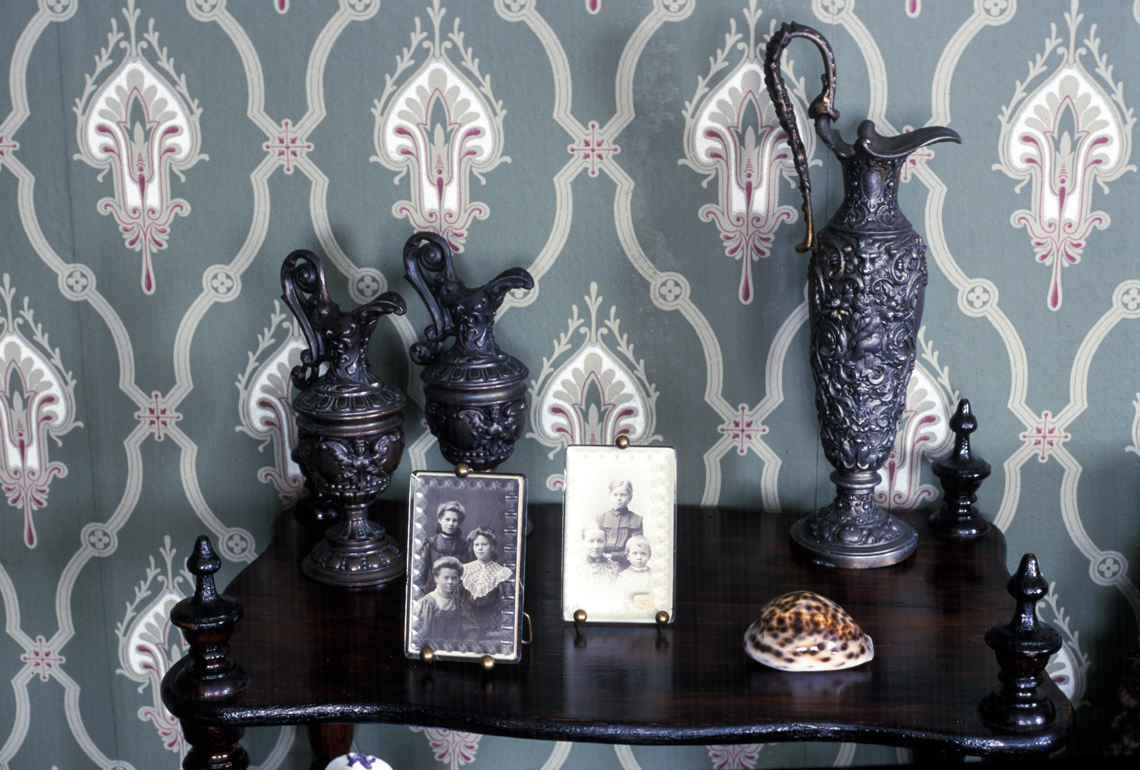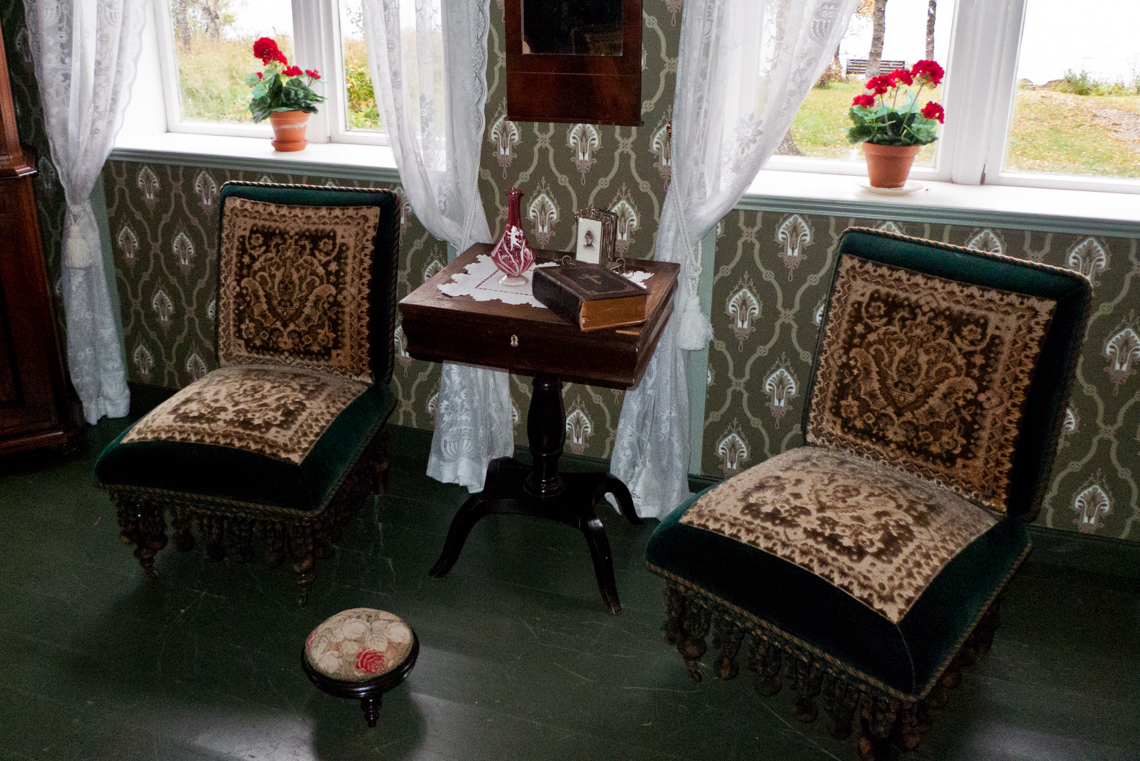At Kvitnes manor, the museum has reconstructed a parlour as it may have appeared at a Northern Norwegian trading place towards the end of the nineteenth century. Known in Norwegian as the klunk style (from the German klunk, meaning tassel), it is a form of Scandinavian Victoriana. It features solid, heavily upholstered furniture richly adorned with fringing and tassels, large green plants and artfully draped curtains. The paintings and prints in lavish frames, candelabra, numerous portraiture photos, decorative figures and exotic souvenirs were supposed to help create a homely ambience – the very antithesis of minimalism!
This style is one of many within historicism which influenced European architecture and interior design from about 1850 to 1900. As the name suggests, inspiration was drawn from various historical stylistic periods, such as Gothic, Renaissance, Baroque and Rococo, but also from the Orient and Japan. Later generations came to regard this style as insipid and florid, and used derogatory terms to characterize it such as “the period of terror” and “stylistic mismatch.”
Historicism was popular with the bourgeoisie, many of whom drew their ideals of good taste and breeding from the old European aristocracy. The older styles were associated with wealth and prestige. At the same time the transition from craftsmanship to mechanized mass production made it easier for ordinary citizens to have copied costly furnishings and other items. Even relatively poor middle-class families with many children and little space prioritized having a lovely parlour to be used only for special occasions.
Thanks to lively coastal trade, the North Norwegian trading posts came into contact with and were very receptive to impulses from afar. European fashions and social etiquette spread rapidly along the coast, reaching the houses of local magnates. In the parlour at the trading post, local merchants might savour cigars and fine European wines from cut-glass drinking vessels with their trading partners, while the son or daughter of the house might entertain guests at the piano with renditions of Chopin, Grieg, Liszt and other popular composers of the day.




